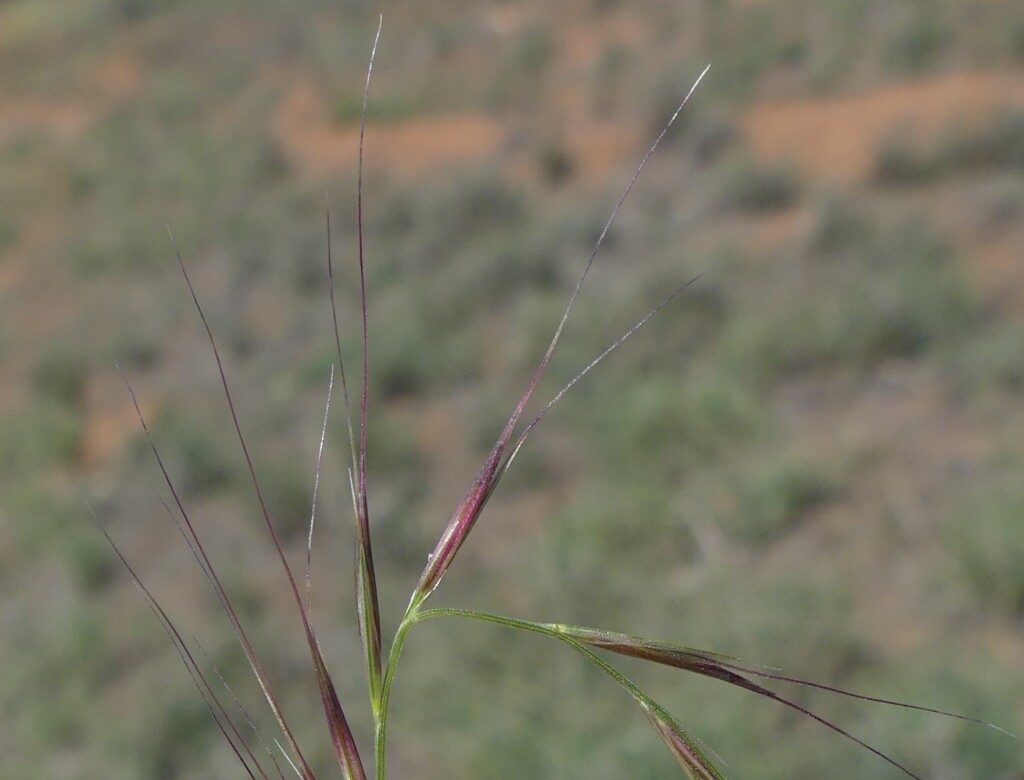Enteropogon acicularis
(Lindl.) Lazarides Spider-grassTufted or occasionally stoloniferous perennial, culms erect, rarely branched at nodes, to c. 50 cm high; leaves glabrous or with a few fine, tubercle-based hairs; blade flat, scabrous on upper surface, to 20 cm long and 6 mm wide, midline usually contrasting-pale on the upper surface. Inflorescence an umbel of 7–15 spikes, 5–18 cm long, widely spreading but often not all in a plane, sometimes flexuose. Spikelets 2–3-flowered, the lower bisexual, the upper male or sterile, purplish at maturity; glumes narrow, acute, the lower 2–4 mm, the upper 5–8 mm long; lemmas narrow-lanceolate, the lower 5.5–8 mm long (including the elongate, hairy callus), awn 9–15 mm long; second lemma 4–6 mm long, with an awn almost as long as that of the first; third lemma (if present) c. 2 mm long, with an awn 4–8 mm. Flowers mainly Sep.–Apr.
LoM, MuM, Wim, VVP, VRiv, MSB, RobP, MuF, GipP, Gold, CVU, NIS, HSF. All mainland states. In Victoria, virtually confined to heavier soils in the vicinity of the Murray River and the lower reaches of its major tributaries west of Yarrawonga and not uncommon in those areas, with an isolated southerly record from Wail, near Dimboola. Often persisting along roadsides in cleared country. .
Walsh, N.G. (1994). Poaceae. In: Walsh, N.G.; Entwisle, T.J., Flora of Victoria Vol. 2, Ferns and Allied Plants, Conifers and Monocotyledons, pp. 356–627. Inkata Press, Melbourne.
 Spinning
Spinning


